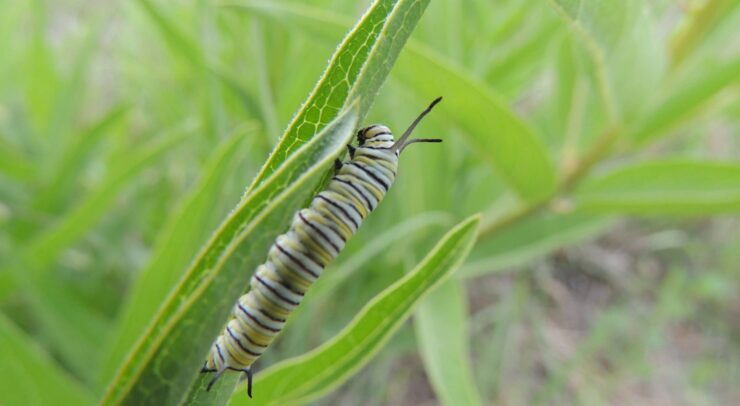U OF O ISOTOPE ECOLOGIST TRAVELS ACROSS THE UNITED STATES TO LEARN MORE ABOUT MONARCH BUTTERFLY MIGRATION
On Aug. 1, 2021, U of O PhD candidate and isotope ecologist Megan Reich published a research article, titled “Continuous-surface geographic assignment of migratory animals using strontium isotopes: A case study with monarch butterflies.” Reich described her research as the perfect mix of entomology and environmental science. For over two months, Reich travelled across the United States for milkweed samples, which helped her map the migratory routes of monarch butterflies and offered insight about their natal origins.
In an interview with the Fulcrum, Reich explained her research further.
“We use isotopes to track the provenance of migratory animals. So what happens is as a tissue forms, so in this case, as a caterpillar feeds on a toast plant, it takes in the isotope signature of its food and drink. So as my monarch caterpillar is feeding on milkweed, which is its host plant, it takes in the strontium isotope ratio of the milkweed. And then when the caterpillar emerges from its chrysalis into a beautiful butterfly, that isotopic signature is fixed in its wings tissues, so then I can capture a butterfly somewhere else. Look at that isotopic signature and kind of determine where that butterfly came from.”
In the long term, strontium isotope mapping will help scientists figure out the best approach for monarch butterfly conservation. Hydrogen isotope mapping, which has been used for the last 20 years, has directly impacted conservation efforts for these butterflies.
The lifespan of a monarch butterfly depends upon in which stage of migration they are born. Adult monarch butterflies travelling back north usually live around five weeks. However, the super generation of monarch butterflies, ie. the generation of monarchs who migrate to Mexico during the winter months, can live up to seven months. Not a lot is known about how butterflies orient themselves towards the south, but one hypothesis states that the angle of the sun plays a role, as butterfly antennas are able to detect light.
The overwintering butterfly population in Mexico has been declining over the past several years. There are many competing theories seeking to explain the decline, and strontium isotope mapping will narrow down these theories by calculating which regions contribute to the majority of the overwintering population, and which regions should have contributed more.
The next step in Reich’s research is to apply her strontium isotope ratios to a long-term data set of butterflies collected from the overwintering site in Mexico. The change in patterns of monarch butterfly migration over time will then be further studied in the context of a dual-isotope approach. She hopes that strontium isotope mapping will act as a new tool to provide a better understanding of how to save the monarch butterfly’s declining population.
Isotope mapping is more productive than trying to put a radio transmitter on a butterfly, but gathering milkweed samples from 22 states wasn’t easy either. Reich attributes a large portion of her sampling success to the help of some very dedicated and passionate people. To collect samples, Reich had the help of biologists, teachers, nature centres and other locals to ask where she could find the host plant (milkweed).
Reich has an uncomplicated suggestion for the people at home who want to take part in monarch butterfly conservation efforts.
“The number one thing you can do is plant milkweed, which is what monarch caterpillars depend on. For adult butterflies, you can provide pollination resources by planting nectar flowers native to your region.”





